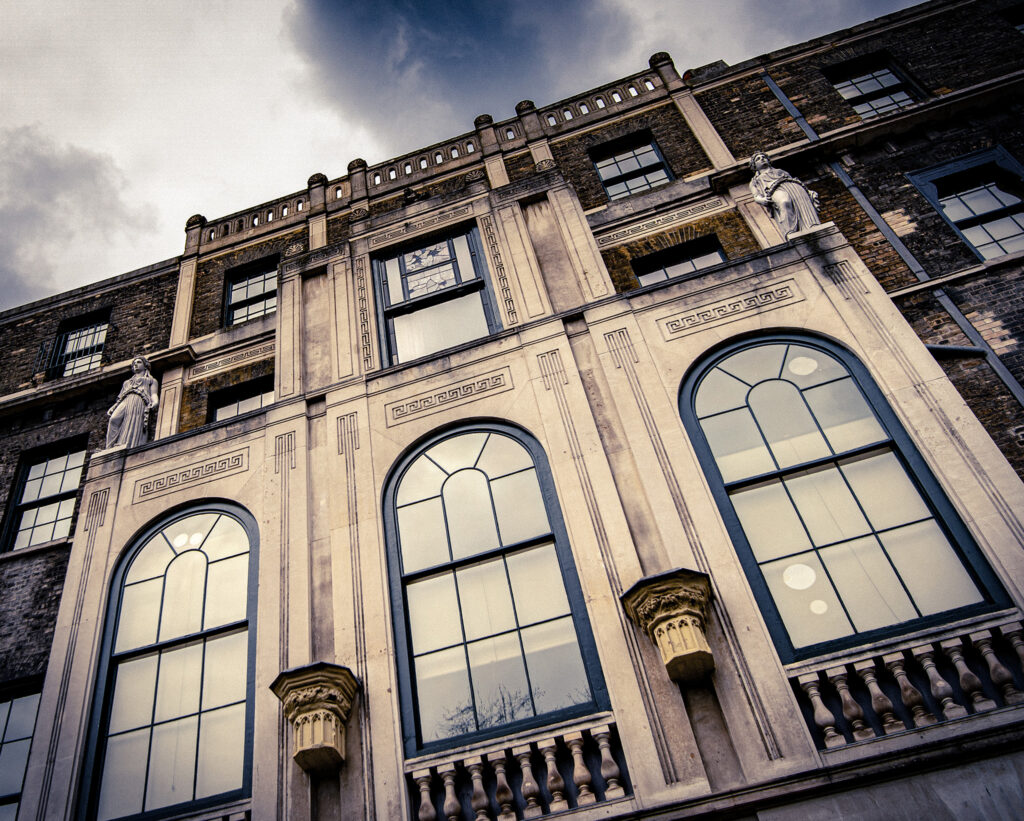
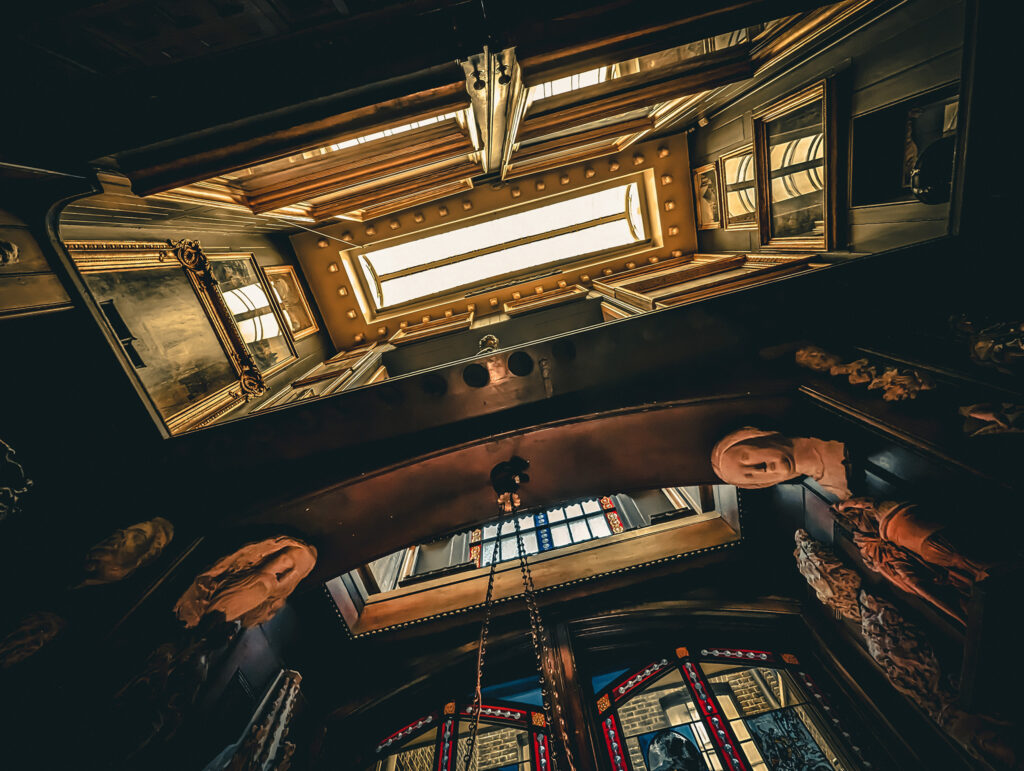
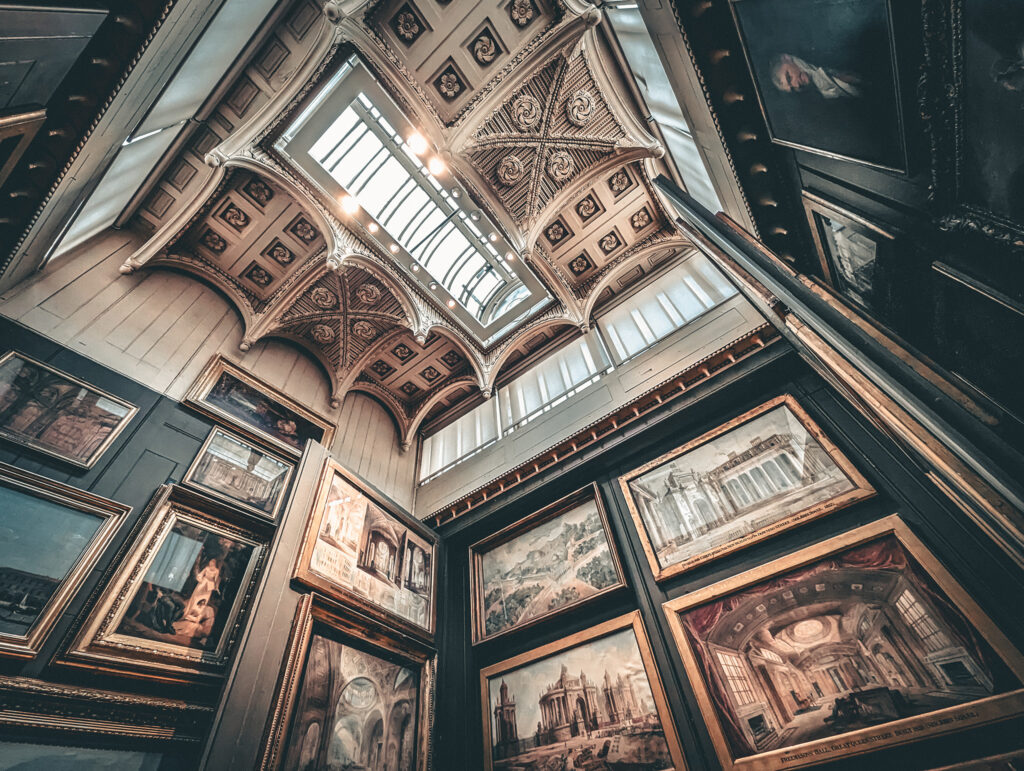
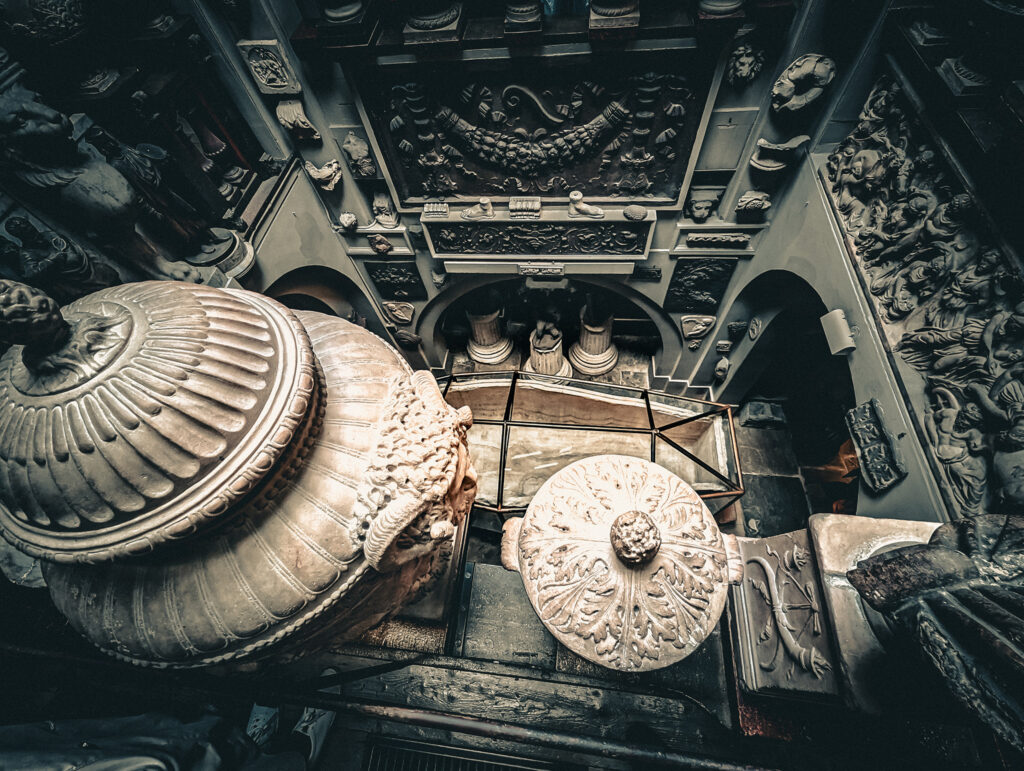
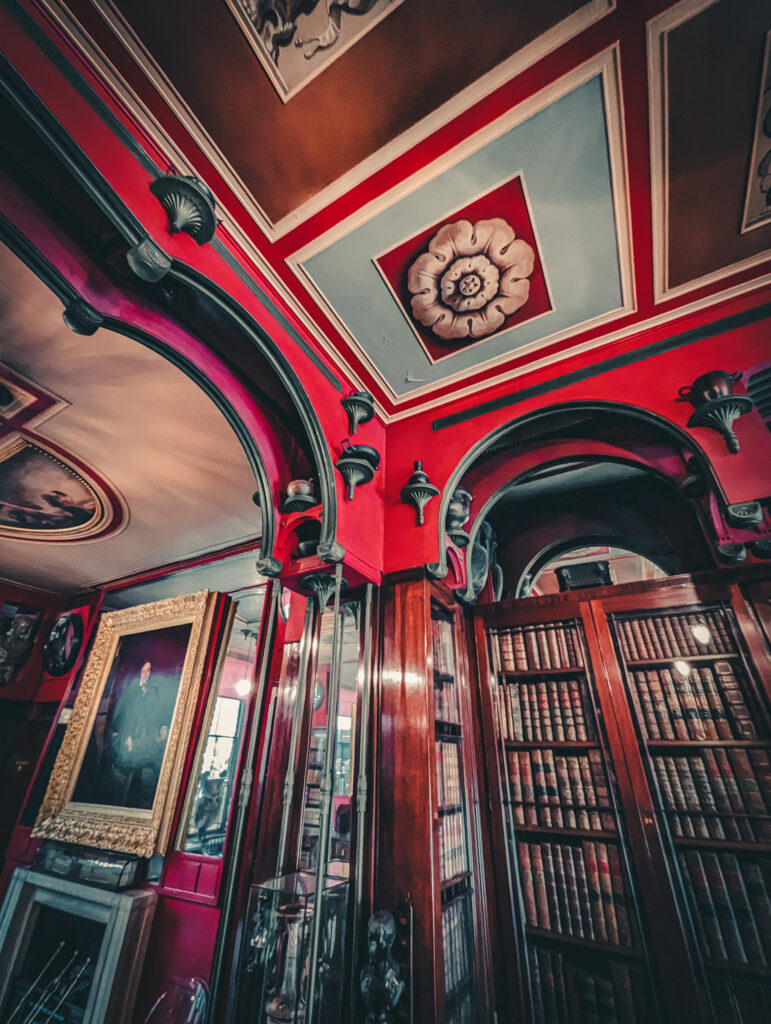
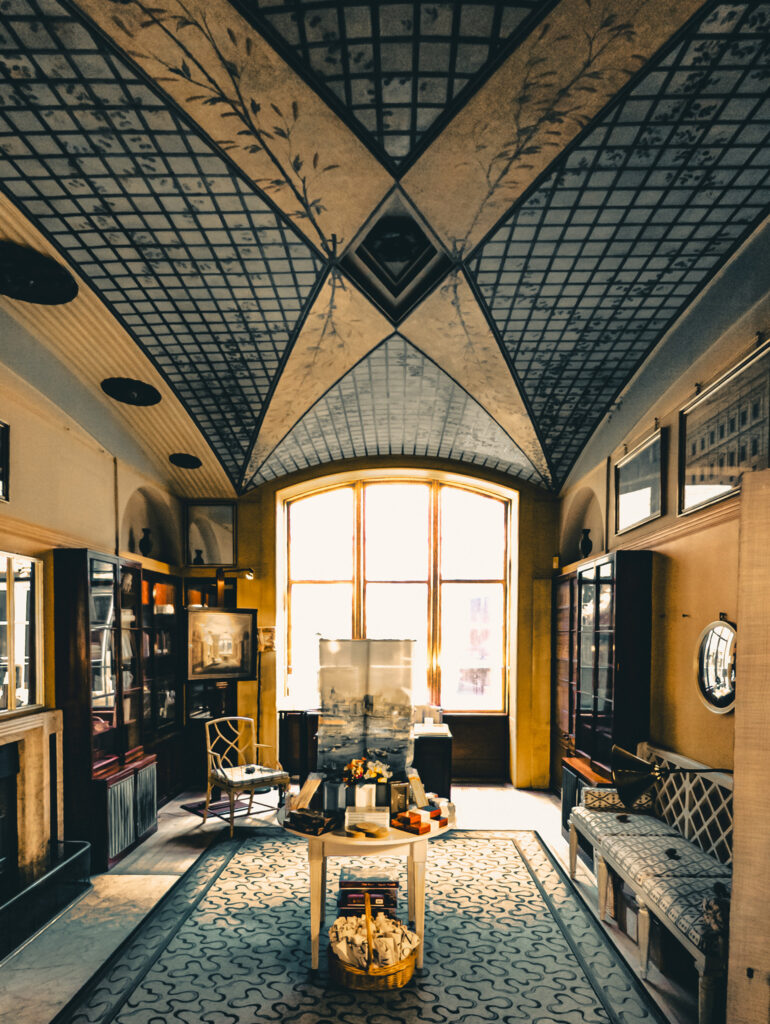
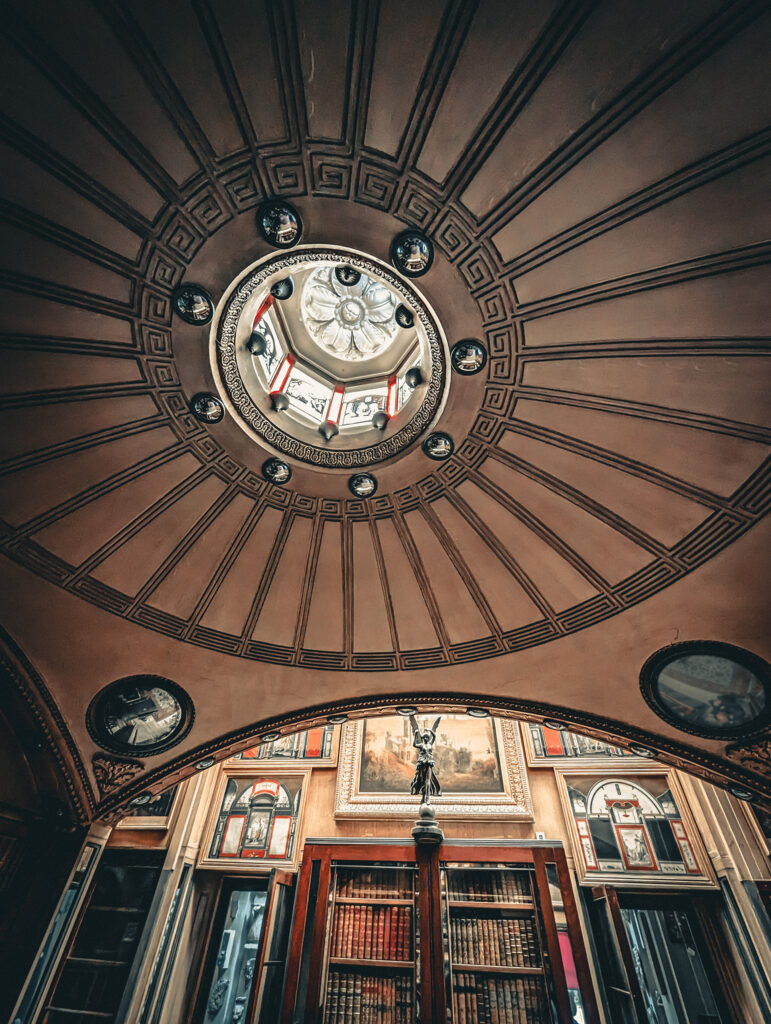
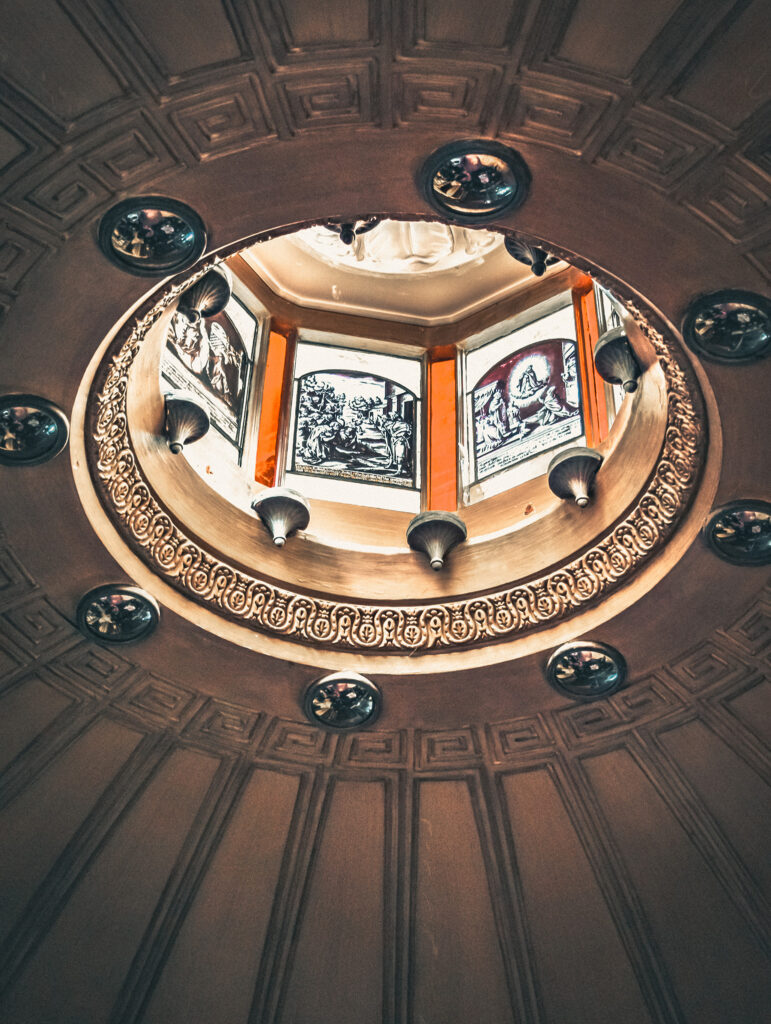
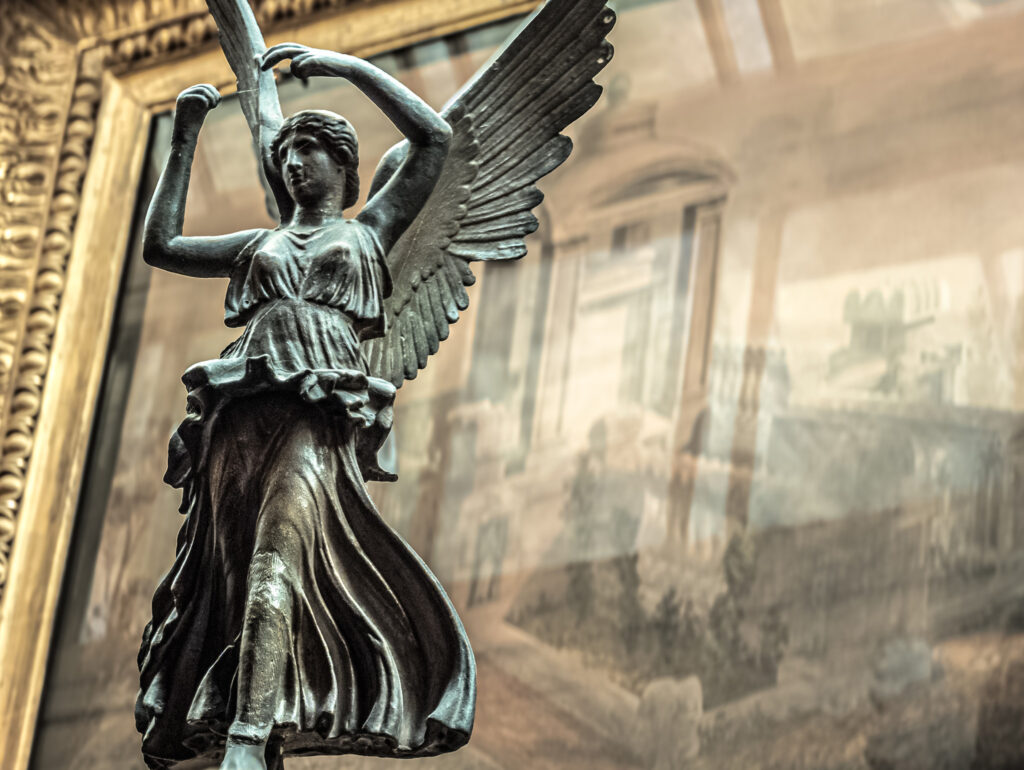
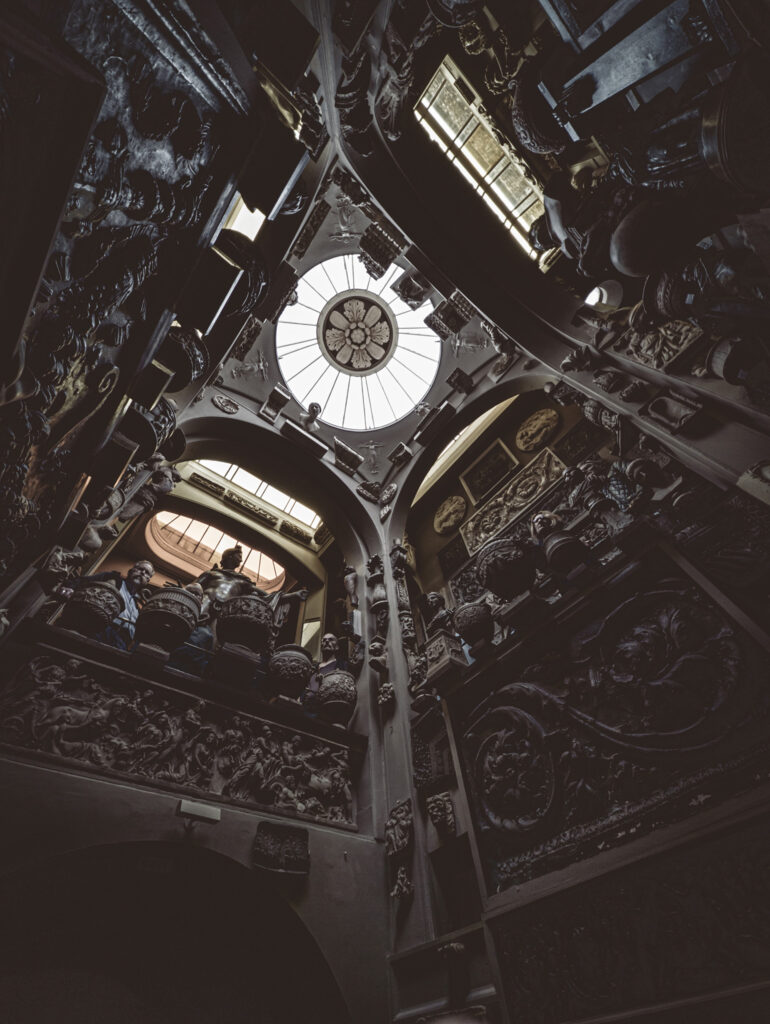
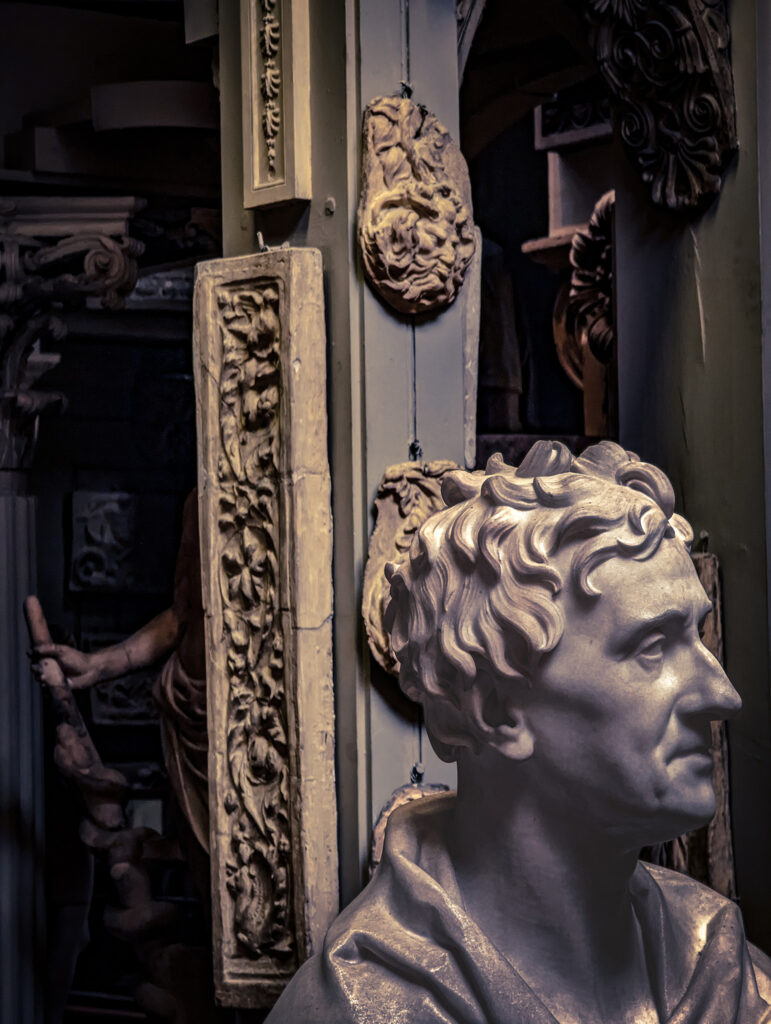
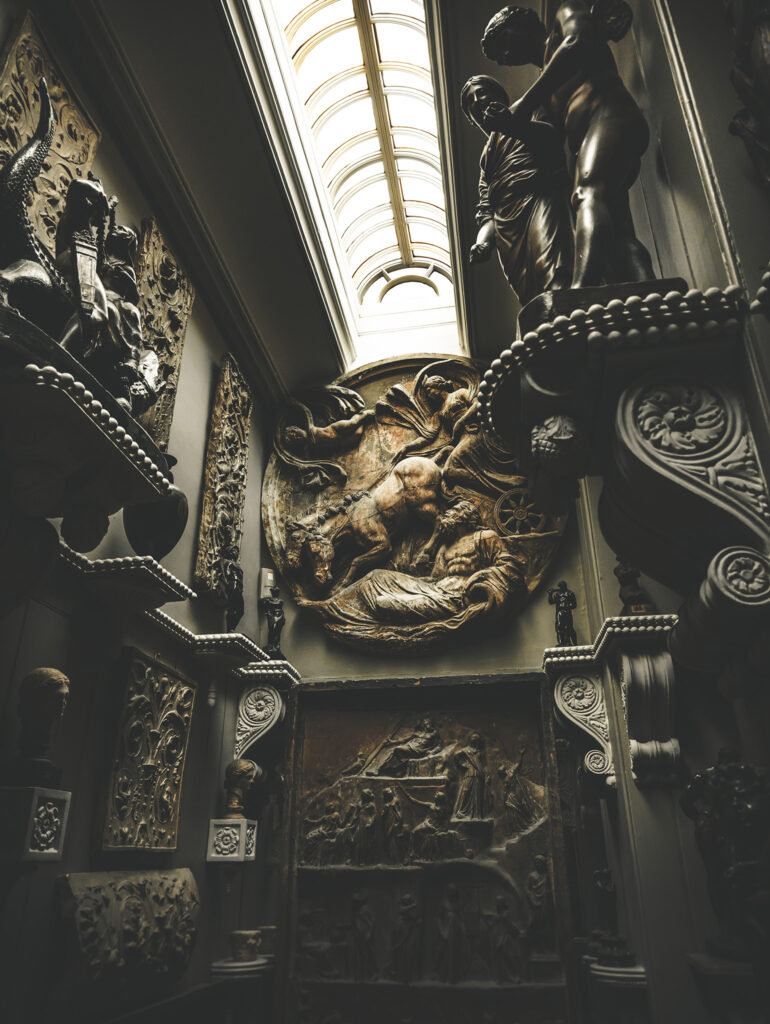
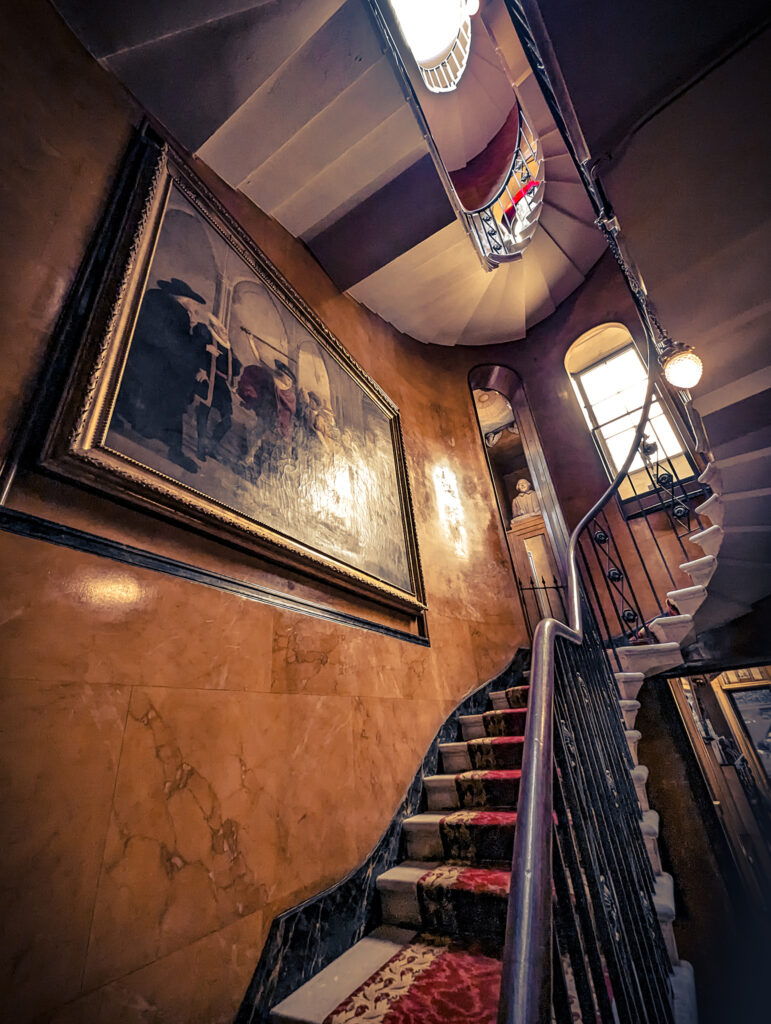
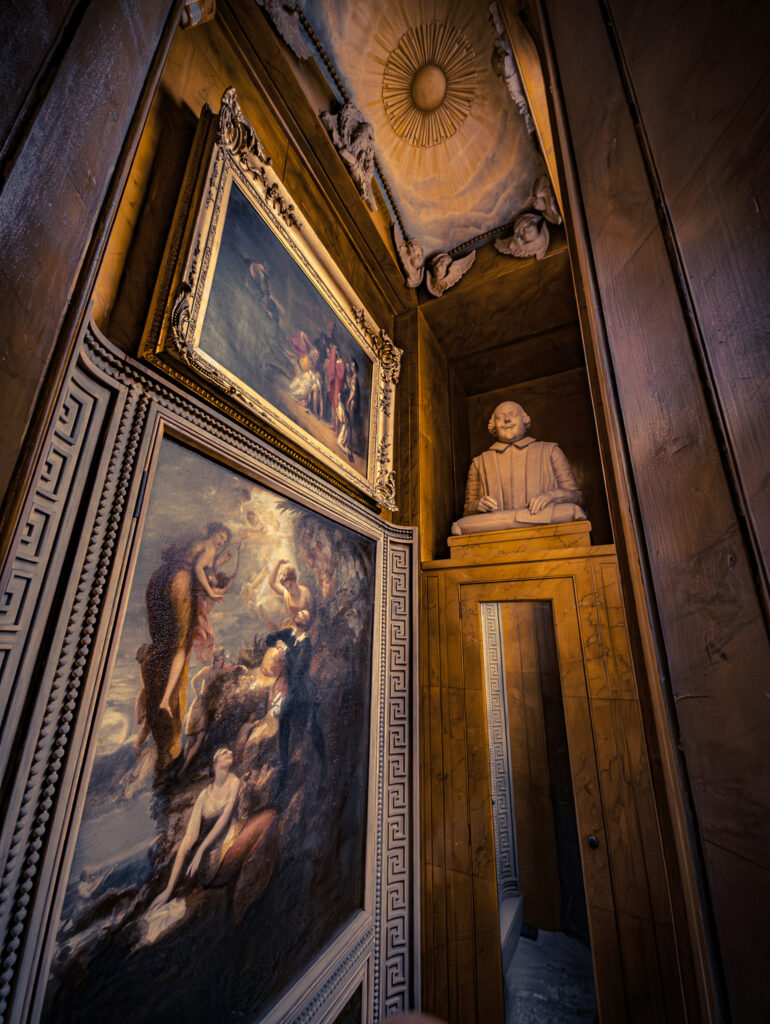
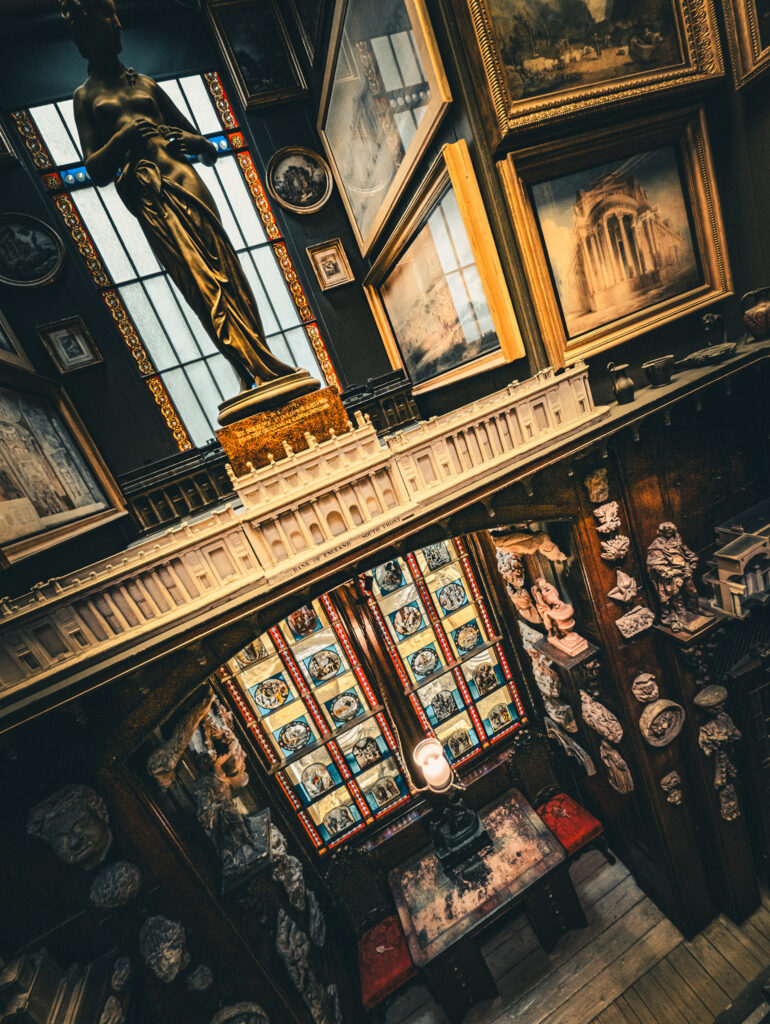
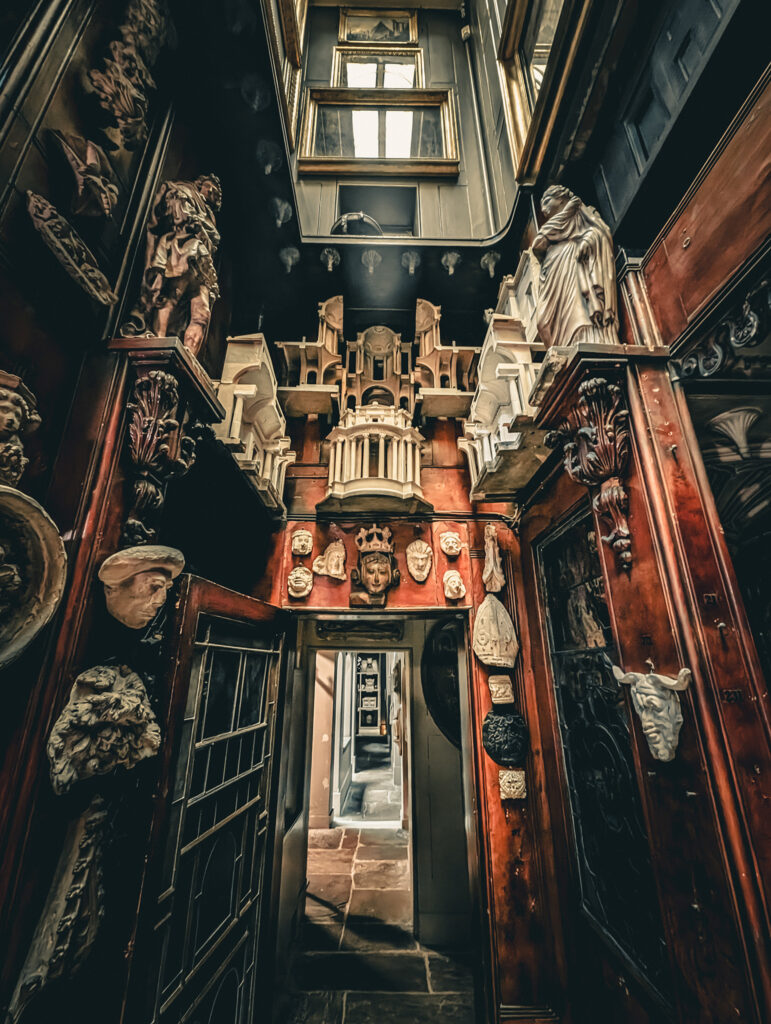
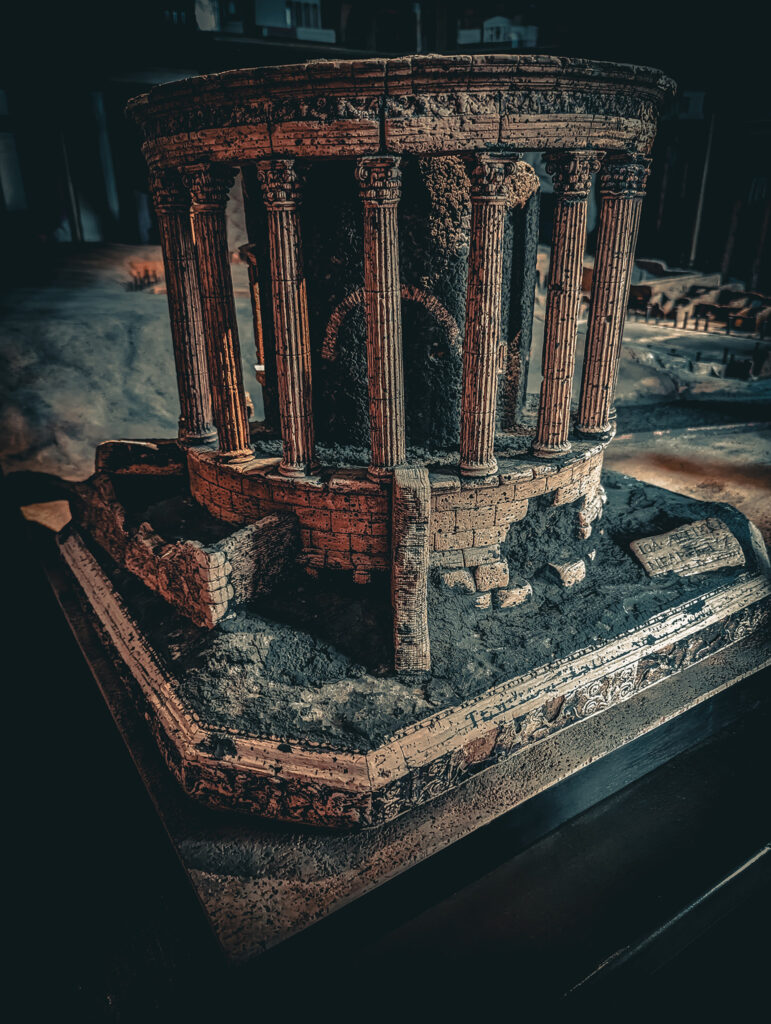
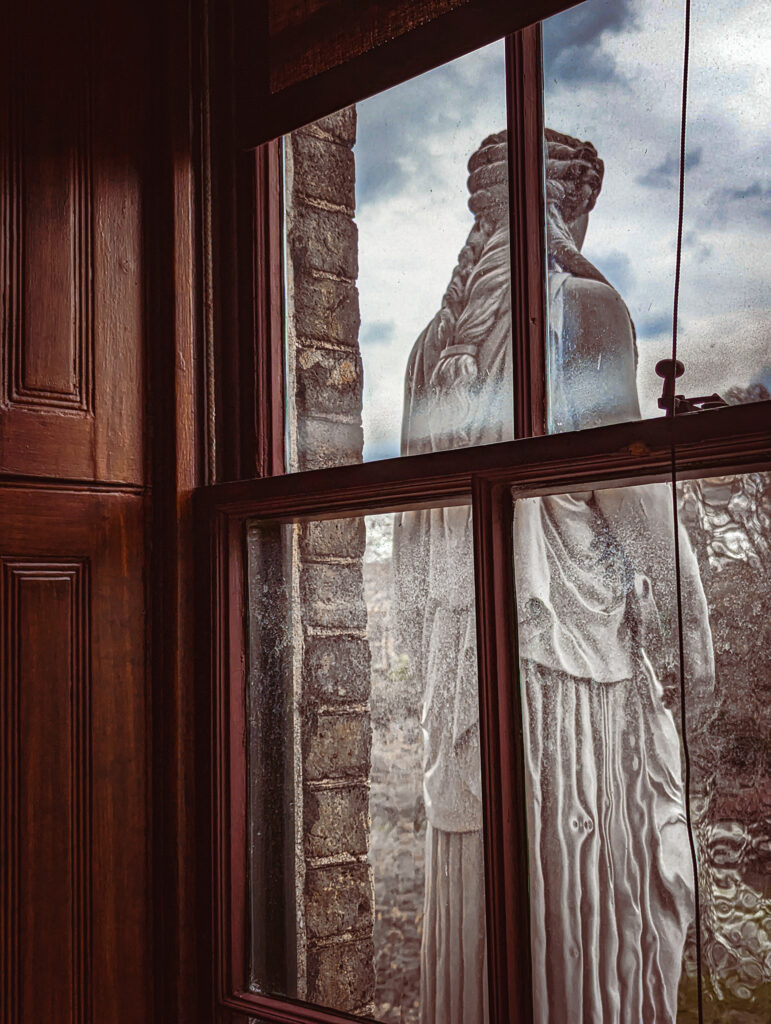
I don’t recall ever hearing John Soane even mentioned when I was a student at Yale School of Architecture. Unlike (as rather nebulously defined) architectural theory, architectural history was not really covered during my degree studies there outside of general survey lectures delivered by a superannuated Vincent Scully. Which I find to be a bit odd given that Robert A.M. Stern — known through various interviews and publications and “projects” sponsored by his namesake firm as a great proponent of Soane’s work — was Dean at Yale at the time.
And yet nevertheless, within a decade of graduating I became quite the Soane aficionado; somewhere, I must have seen a reference, and (hopeless autodidact to the last) I followed it up con gusto. Even my wife, who does not normally bother to acquaint herself with my reading choices, began to remark on the number of texts with John Soane’s name in the title that were left sitting on the dining room table after my morning coffee or stacked at the bottom of the stairs leading to my home office. And when it came time to renovate my own nineteenth-century townhouse, it was the 2007 edition of A New Description of his house/museum that I first consulted for inspiration.
So what is it? What about Soane caught and still catches my attention? A bricklayer’s son, through shear force of will he somehow rose in class-crushed Georgian Britain to become one of the most powerful architects of his age, as well as with his friend-enemy John Nash the best remembered by Everyone. His work, although dismissed as “Neoclassical” now, was so distinctly sui generis during his lifetime that his contemporaries half-jokingly referred to it as if it was a separate typology from Gothic, Greek, or Roman; it was Soanian, seemingly referring to a specific era of antiquity…but which antiquity?
It’s been 186 years since his death, and most of Soane’s realized designs are gone.
Yet in his home there persists somehow a very personal alternative reality. There’s more interior space than there should be here, even for a building that seemed organized as much by section as by plan. The light is colored by odd glazing and the rich tones of various surfaces, and it comes from unexpected directions, reflected by unexpected mirrors, caressing in its travels unexpected artifacts and paintings — fragments and souvenirs from Sir John’s long life and (I suspect) his dreams.
I am all about alternative realities.
But there’s also something actually uncanny going on here, almost supernatural. Soane, by all accounts, was an irreligious deist. He had no truck with organized worship; his celebrated sepulchre at St. Pancras Old Church is decorated not with a cross but by a pine cone and the ouroboros — both symbols of regeneration, not redemption in an afterlife. Soane had no real heirs, in the sense of successors to his Art; his sons John and George were, respectively, weak and incompetent, drunken and abusive. Of his many apprentices, none succeeded in the profession. His great illustrator, John Gandy, would end miserably in a madhouse. So there were none to carry his visionary “spark” forward. The Soanian would fade away forever, as his built work succumbed to the inevitable. Unless its creator could somehow carry on.
…which he did, in the most architectural way possible.
A visit to Soane’s museum is like a tour of the designer’s mind. That’s exactly right, but lose the simile. It is his mind.
John Soane’s ghost is not haunting his house, converted by private act of Parliament into a perpetual museum. It is his house. He is his house.The creator became the created.
The Soanian persists.
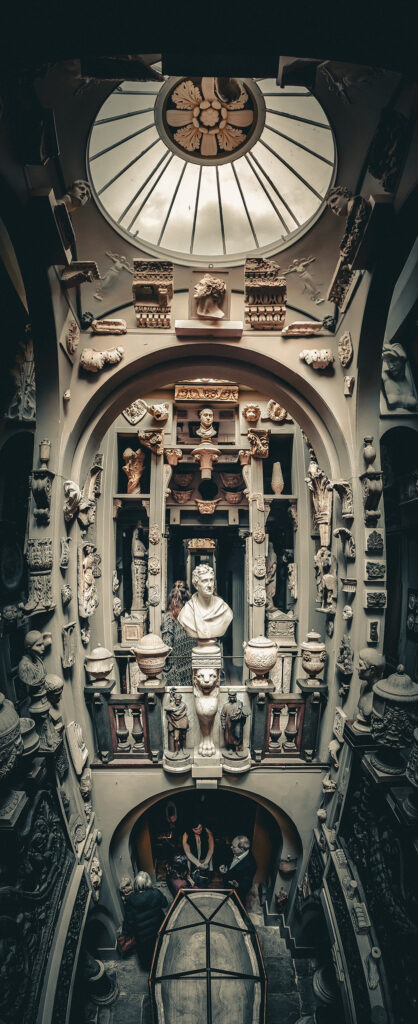
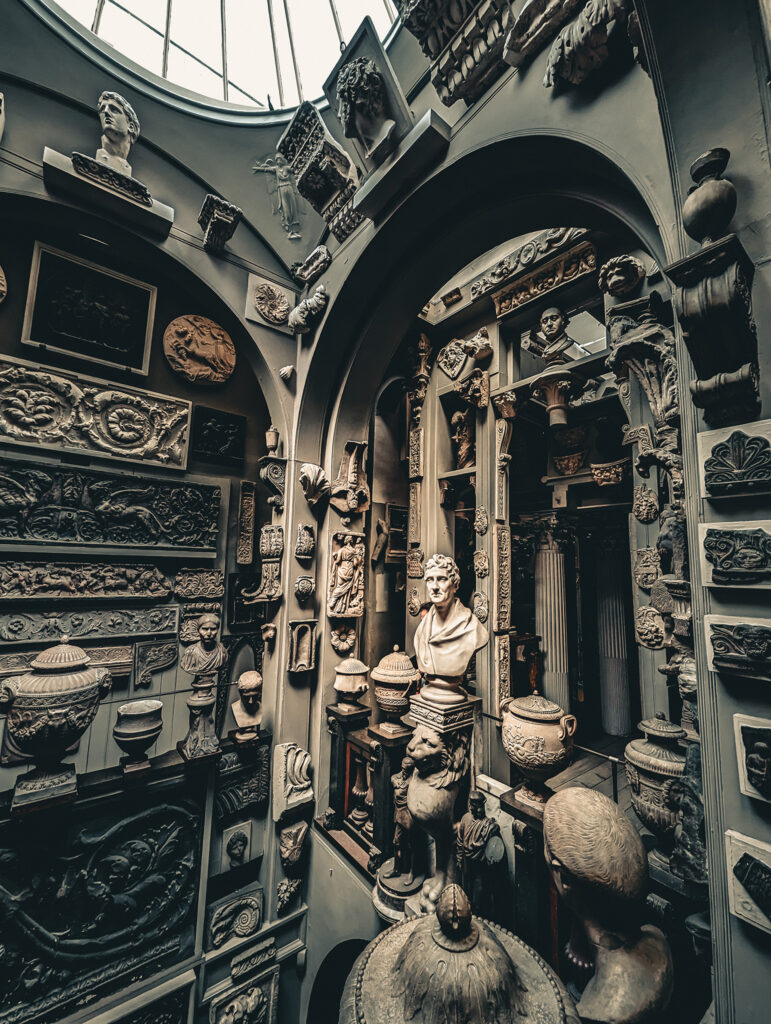
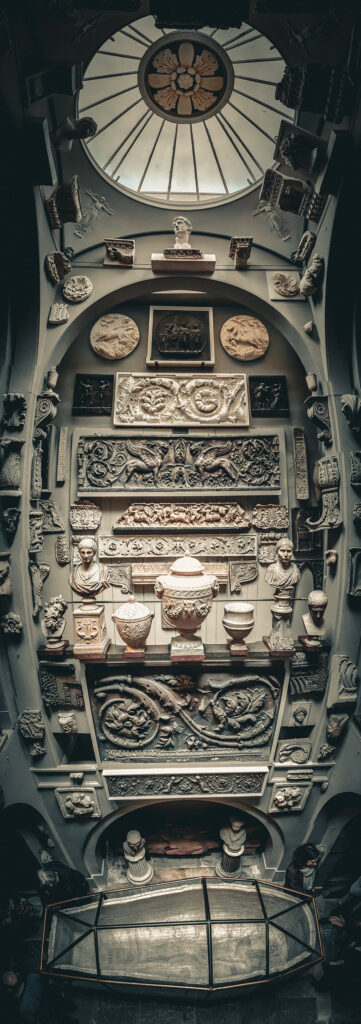
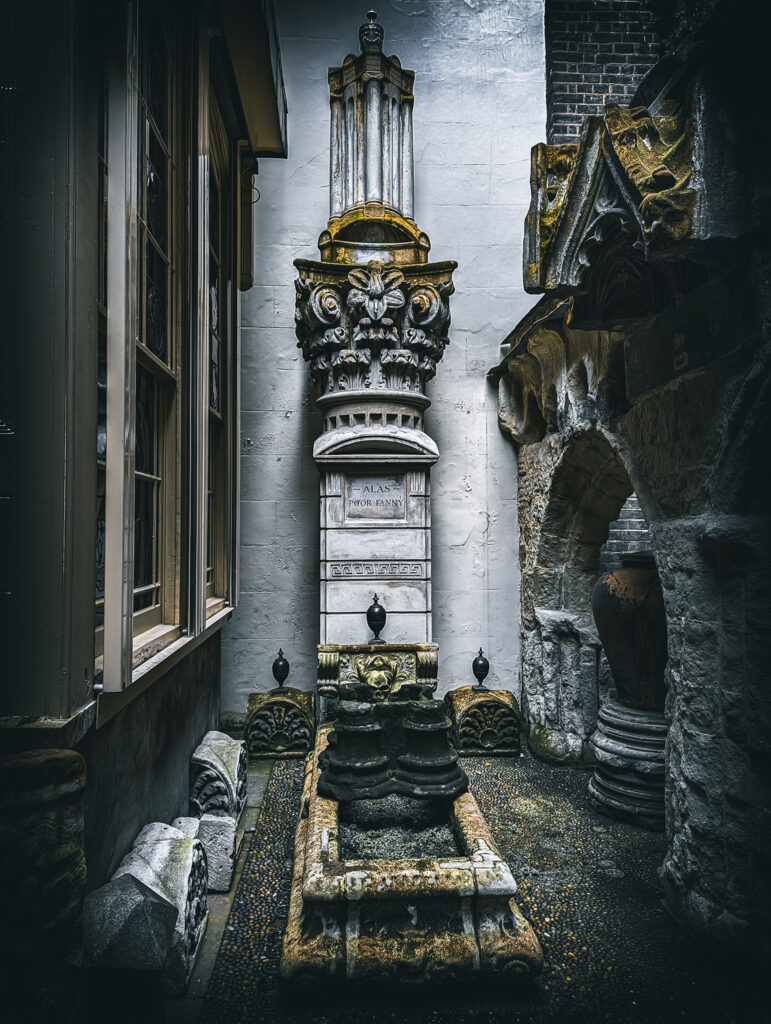
Leave a Reply